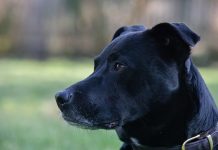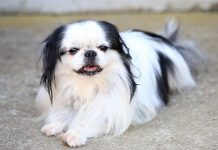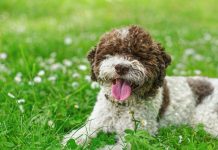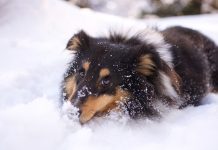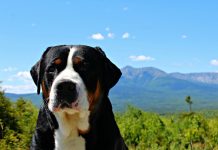History and Origins of the Belgian Malinois Breed

The Belgian Malinois is a versatile and intelligent breed that originated in Belgium. Here’s a brief overview of the breed’s history and origins:
- Origins in Belgium:
- The Belgian Malinois is one of four Belgian shepherd breeds developed in the late 19th century in Belgium.
- It was named after the Belgian city of Malines, where the breed was first recognized and developed.
- Herding and Working Background:
- Originally bred as a herding dog, the Belgian Malinois excelled at working on farms to control livestock.
- The breed’s intelligence, agility, and strong work ethic made it well-suited for various tasks beyond herding.
- Versatility in Working Roles:
- Belgian Malinois quickly gained recognition for their versatility and trainability, excelling in police work, search and rescue, protection, and other working roles.
- They were used extensively by the military and police forces due to their keen senses and ability to perform under pressure.
- Modern Recognition and Popularity:
- The Belgian Malinois was officially recognized by the American Kennel Club (AKC) in 1959 as a member of the herding group.
- Today, the breed is highly regarded worldwide for its exceptional working abilities, athleticism, and loyalty.
Physical Characteristics and Appearance of Belgian Malinois
The Belgian Malinois is a medium-to-large-sized dog with a distinctive appearance and athletic build. Here are the key physical characteristics:
- Size:
- Belgian Malinois are medium-to-large dogs, with males typically standing between 24 to 26 inches (61 to 66 cm) at the shoulder and weighing 60 to 80 pounds (27 to 36 kg).
- Females are slightly smaller, standing 22 to 24 inches (56 to 61 cm) and weighing 40 to 60 pounds (18 to 27 kg).
- Muscular Build:
- The breed has a muscular and agile build, reflecting its heritage as a herding and working dog.
- They are well-balanced and proportionate, displaying strength and endurance.
- Coat and Color:
- Belgian Malinois have a short, straight, and weather-resistant coat that lies close to the body.
- The breed’s coat color is typically fawn to mahogany with a black mask and ears. Some may have a small amount of white on the chest and toes.
- Head and Expression:
- Belgian Malinois have a moderately wide and flat skull, with a well-defined stop.
- They have almond-shaped eyes that are brown in color, expressing alertness and intelligence.
- The ears are erect and triangular, adding to the breed’s attentive appearance.
- Tail:
- The tail of a Belgian Malinois is strong and set low, reaching to the hock. It is carried low at rest and raised when alert or in motion.
- Gait:
- Belgian Malinois move with a purposeful and efficient gait, demonstrating agility and stamina.
- Their movement is effortless and coordinated, reflecting their athleticism and working heritage.
The Belgian Malinois’s physical characteristics are a testament to its role as a versatile and capable working dog. Their intelligence, trainability, and athleticism make them well-suited for a variety of tasks and environments, from herding to law enforcement and search and rescue.
Belgian Malinois Temperament and Personality Traits:
- Intelligent and Alert:
- Belgian Malinois are exceptionally intelligent dogs, ranking among the most intelligent dog breeds. They are quick learners and excel in obedience training.
- Loyal and Protective:
- This breed is deeply loyal and bonds closely with their family. They are naturally protective and make excellent guard dogs when properly trained.
- Energetic and Active:
- Belgian Malinois are high-energy dogs that require plenty of physical exercise and mental stimulation. They thrive on activities that engage their mind and body.
- Confident and Fearless:
- Belgian Malinois are confident dogs with a fearless disposition. They are known for their courage and readiness to face challenges.
- Alert and Watchful:
- Due to their herding and protective instincts, Belgian Malinois are naturally alert and watchful. They make excellent watchdogs and will alert their owners to any perceived threats.
- Good with Family:
- When properly socialized, Belgian Malinois are affectionate and playful with their families. They are known to be good with children but should be supervised due to their high energy.
- Work-Oriented:
- Belgian Malinois have a strong work ethic and excel in various dog sports and working roles, including obedience, agility, tracking, and protection work.
- Independent Thinkers:
- While highly trainable, Belgian Malinois can also be independent thinkers. They require consistent training and firm, positive reinforcement to prevent behavioral issues.
Training and Socialization Needs for Belgian Malinois:
- Early Socialization:
- Start socializing your Belgian Malinois puppy early to expose them to different people, animals, and environments. This helps prevent fearfulness and aggression as they mature.
- Obedience Training:
- Belgian Malinois thrive on obedience training and excel in structured activities. Use positive reinforcement techniques and keep training sessions engaging and challenging.
- Regular Exercise:
- Provide ample physical exercise for your Belgian Malinois to channel their energy and prevent boredom. Daily walks, runs, fetch, and interactive play sessions are essential.
- Mental Stimulation:
- Keep your Belgian Malinois mentally stimulated with puzzle toys, obedience training, and scent work. They enjoy having a job to do and will thrive with mental challenges.
- Consistent Leadership:
- Establish yourself as a confident and consistent leader for your Belgian Malinois. They respond well to positive reinforcement but require clear boundaries and expectations.
- Channel Instincts Appropriately:
- Since Belgian Malinois have strong herding instincts, provide outlets for these behaviors through activities like agility or herding trials. Avoid letting them herd small children or pets.
- Positive Reinforcement:
- Use positive reinforcement methods, such as treats, praise, and rewards, to motivate and reinforce desired behaviors. Harsh training methods can lead to fearfulness and aggression.
By meeting the training and socialization needs of your Belgian Malinois, you can develop a well-mannered, confident, and balanced companion. This breed excels in active households with dedicated owners who can provide the physical and mental stimulation they require. With proper training and socialization, Belgian Malinois make exceptional working dogs, loyal family companions, and enthusiastic partners in various dog sports and activities.
Health Considerations and Common Issues in Belgian Malinois:
- Hip Dysplasia:
- Hip dysplasia is a common orthopedic condition in Belgian Malinois. It occurs when the hip joint doesn’t develop properly, leading to arthritis and mobility issues. Responsible breeders perform hip evaluations to minimize the risk.
- Elbow Dysplasia:
- Elbow dysplasia is another orthopedic concern in Belgian Malinois, affecting the elbow joint’s development and causing lameness and discomfort. Regular veterinary check-ups and appropriate exercise can help manage this condition.
- Progressive Retinal Atrophy (PRA):
- PRA is a group of genetic eye diseases that cause progressive vision loss in dogs, including Belgian Malinois. Annual eye examinations by a veterinary ophthalmologist are recommended to monitor for signs of PRA.
- Epilepsy:
- Belgian Malinois may be susceptible to epilepsy, a neurological disorder characterized by recurrent seizures. Seizures can be managed with medication, but early diagnosis is essential for proper treatment.
- Bloat (Gastric Dilatation-Volvulus, GDV):
- GDV is a life-threatening condition where the stomach twists and fills with gas, cutting off blood flow. Belgian Malinois, especially those with deep chests, are at higher risk. Feed multiple small meals, avoid vigorous exercise after eating, and be aware of symptoms.
- Allergies:
- Some Belgian Malinois may develop allergies to environmental triggers or certain foods. Symptoms may include itching, skin irritation, and gastrointestinal issues. Consult with a veterinarian for proper diagnosis and management.
- Degenerative Myelopathy (DM):
- DM is a progressive spinal cord disease that affects mobility in older dogs, including Belgian Malinois. While there is no cure, supportive care and physical therapy can help manage symptoms.
Living with a Belgian Malinois: Suitable Environments and Lifestyle Considerations:

- Active Lifestyle:
- Belgian Malinois are high-energy dogs that require plenty of exercise and mental stimulation. They thrive in active households where they can participate in regular outdoor activities, such as running, hiking, and playing fetch.
- Structured Training:
- Provide consistent and structured training for your Belgian Malinois to channel their intelligence and energy positively. Enroll in obedience classes or engage in dog sports like agility and scent work to keep them mentally engaged.
- Secure Fenced Yard:
- A secure fenced yard is essential for Belgian Malinois to safely play and exercise off-leash. They are agile and may try to escape if bored or understimulated.
- Socialization:
- Early and ongoing socialization is crucial to ensure your Belgian Malinois is well-adjusted and comfortable around people, children, and other animals. Expose them to various environments and experiences to build confidence.
- Attention and Interaction:
- Belgian Malinois thrive on human interaction and may develop behavioral issues if left alone for long periods. They are best suited for households where someone is present most of the time.
- Proper Nutrition:
- Feed a high-quality diet suitable for active breeds to support your Belgian Malinois’ energy needs and overall health. Avoid overfeeding to prevent obesity, which can exacerbate joint issues.
- Regular Veterinary Care:
- Schedule regular veterinary check-ups, vaccinations, and preventive care to monitor your Belgian Malinois’ health and detect any potential issues early.
By providing a suitable environment, structured training, and attentive care, you can ensure a fulfilling and healthy life for your Belgian Malinois companion. This breed excels in active households where they can participate in various activities and form a strong bond with their owners. Responsible breeding practices and proactive healthcare measures contribute to maintaining the Belgian Malinois’ well-being and vitality.
Belgian Malinois Variations and Breeding Practices
The Belgian Malinois is a distinct breed within the Belgian shepherd group, which also includes the Belgian Tervuren, Belgian Sheepdog (Groenendael), and Laekenois. While these breeds share similarities, each has unique characteristics and is recognized separately by kennel clubs. Here’s an overview of Belgian Malinois variations and breeding practices:
Belgian Malinois Variations:
- Coat Color and Pattern:
- Belgian Malinois typically have a short, straight, weather-resistant coat with a dense undercoat. The breed’s coat color is typically fawn to mahogany with black overlay and mask.
- Some Belgian Malinois may have small white markings on the chest and toes, but excessive white is not desirable in the breed standard.
- Size and Build:
- Belgian Malinois are medium-to-large-sized dogs with a strong and athletic build. Males typically stand 24 to 26 inches (61 to 66 cm) at the shoulder and weigh 60 to 80 pounds (27 to 36 kg), while females are slightly smaller.
- Temperament and Working Ability:
- Belgian Malinois are known for their intelligence, trainability, and high energy levels. They excel in various working roles, including police work, search and rescue, protection, and sports like agility and obedience.
- The breed is characterized by its confident, alert, and protective nature, making them excellent watchdogs and loyal companions.
Breeding Practices:
- Health Testing:
- Responsible Belgian Malinois breeders prioritize health testing to screen for genetic conditions common in the breed, such as hip dysplasia, elbow dysplasia, progressive retinal atrophy (PRA), and other hereditary disorders.
- Breeders use health clearances from recognized organizations like the Orthopedic Foundation for Animals (OFA) and the Canine Health Information Center (CHIC) to ensure breeding dogs are free from major genetic health issues.
- Temperament and Working Ability:
- Breeding Belgian Malinois for working ability and temperament is essential to maintain the breed’s versatility and drive.
- Successful breeding programs focus on producing dogs with a stable temperament, strong work ethic, and sound physical structure suitable for their intended working roles.
- Selection and Pedigree:
- Ethical breeders carefully select breeding pairs based on their pedigree, health clearances, temperament, and conformation to the breed standard.
- They aim to preserve and improve desirable traits while minimizing the risk of passing on genetic health issues or temperament problems.
- Avoidance of Overbreeding:
- Responsible Belgian Malinois breeders avoid overbreeding and prioritize the well-being of their dogs. They limit the number of litters per female and ensure appropriate rest between breeding cycles.
- Education and Support:
- Reputable breeders provide education and support to puppy buyers, offering guidance on training, health care, and responsible dog ownership.
- They prioritize the welfare of their puppies and maintain relationships with owners throughout the dog’s life.
- Ethical Standards:
- Ethical Belgian Malinois breeders adhere to established breed standards and guidelines set by reputable kennel clubs and breed organizations.
- They are committed to the long-term health, temperament, and preservation of the Belgian Malinois breed.
By following responsible breeding practices and prioritizing health, temperament, and working ability, breeders play a crucial role in preserving the quality and integrity of the Belgian Malinois breed. Potential puppy buyers should seek out reputable breeders who prioritize health testing, socialization, and responsible breeding practices to ensure they acquire a healthy and well-adjusted Belgian Malinois companion.
50 Best Names with Meanings for Belgian Malinois
Choosing a meaningful name for your Belgian Malinois can be a fun and thoughtful process. Here are 50 great names with meanings for Belgian Malinois:
Male Names:
- Axel – Means “father of peace.”
- Finn – Means “fair” or “white.”
- Kai – Means “sea” in Hawaiian.
- Loki – Named after the Norse god of mischief.
- Rex – Latin for “king,” fitting for this regal breed.
- Thor – Named after the Norse god of thunder.
- Dante – Means “enduring” or “steadfast.”
- Enzo – Means “ruler of the home.”
- Hugo – Means “mind,” “spirit,” or “intelligence.”
- Jasper – Means “treasurer” or “bringer of treasure.”
- Maverick – Refers to an independent and unorthodox thinker.
- Odin – Named after the Norse god associated with wisdom and war.
- Ranger – Reflects the breed’s origins as a working and versatile dog.
- Saber – Represents a sword, symbolizing strength and protection.
- Titan – Refers to something of great size, strength, or power.
- Viggo – Means “war.”
- Zephyr – Refers to a gentle, mild breeze.
- Bane – Means “destroyer” or “bane of evil.”
- Blitz – German for “lightning,” representing speed and agility.
- Cyrus – Means “young” or “far-sighted.”
Female Names:
- Athena – Named after the Greek goddess of wisdom and warfare.
- Luna – Means “moon,” symbolizing femininity and beauty.
- Stella – Means “star,” reflecting brightness and radiance.
- Zara – Means “princess” or “radiance.”
- Cleo – Short for Cleopatra, symbolizing royalty and power.
- Mila – Means “gracious” or “dear.”
- Sasha – Means “defender of mankind.”
- Nova – Means “new” or “star.”
- Scout – A brave and adventurous name.
- Willow – Symbolizes grace and flexibility.
- Gemma – Means “gem” or “precious stone.”
- Nyx – Named after the Greek goddess of the night.
- Sable – Refers to a dark, rich fur color.
- Astra – Means “star” in Latin.
- Kira – Means “sun” in Russian.
- Vixen – Represents a female fox, known for agility and cunning.
- Zelda – A unique and spirited name.
- Echo – Refers to a sound that is reflected back.
- Indigo – Represents a deep blue-purple color.
- Venus – Named after the Roman goddess of love and beauty.
Gender-neutral Names:
- Blaze – Represents fire and energy.
- Echo – Refers to a sound that is reflected back.
- Jett – Means “jet black,” symbolizing strength and power.
- Rogue – Represents independence and adventurous spirit.
- Storm – Represents power and intensity.
- Zenith – Refers to the highest point or peak.
- Ripple – Represents a small wave or movement.
- Orion – Named after the constellation, symbolizing strength and endurance.
- Harley – A spirited and adventurous name.
- Raven – Represents intelligence and mystery.
Choose a name that resonates with your Belgian Malinois’ personality, appearance, or the qualities you admire. Whether you prefer a strong and regal name, a playful and adventurous name, or a name with a special meaning, the right name will be a perfect fit for your beloved Belgian Malinois companion.

In conclusion, this comprehensive guide to Belgian Malinois dogs has provided a detailed overview of this intelligent and versatile breed. Throughout our exploration, we’ve delved into the history, distinctive characteristics, and essential care considerations that define Belgian Malinois. Known for their intelligence, athleticism, and loyalty, Belgian Malinois make exceptional working dogs and companions for experienced handlers. They excel in various roles, including police work, search and rescue, and obedience competitions, showcasing their adaptability and drive. As you embark on your journey with a Belgian Malinois, may you appreciate their unique qualities and form a strong bond with this remarkable breed, creating lasting companionship and fulfillment together.






